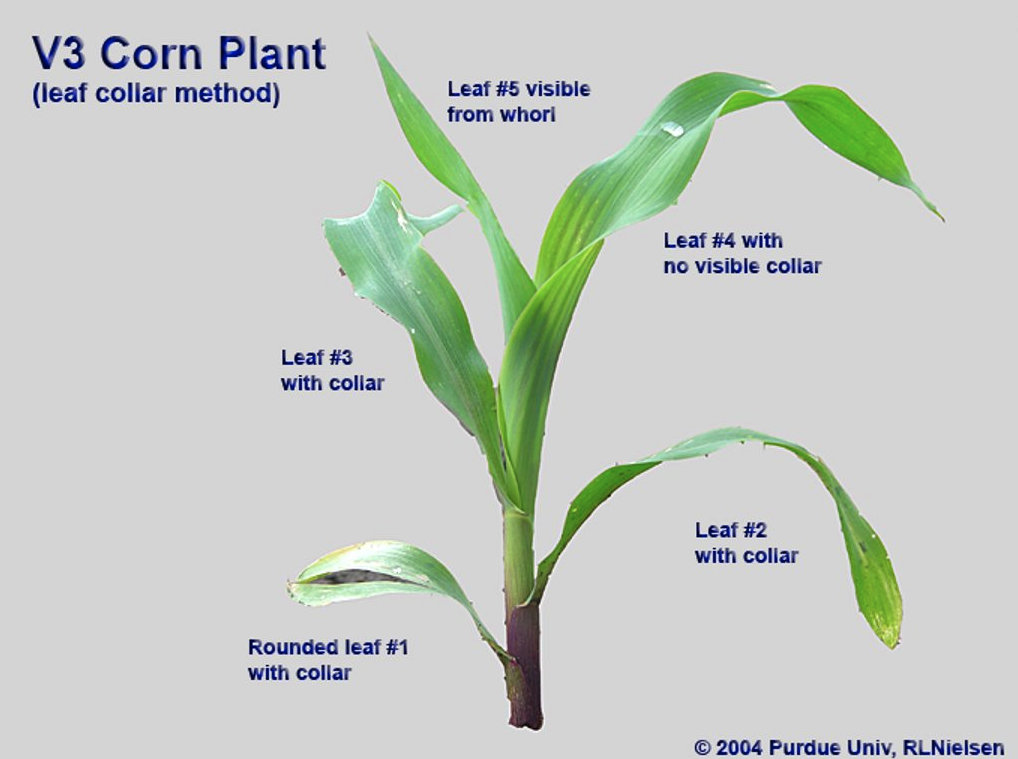Corn Growth Stages: Part 1 – Emergence and the First 30 Days of Life.
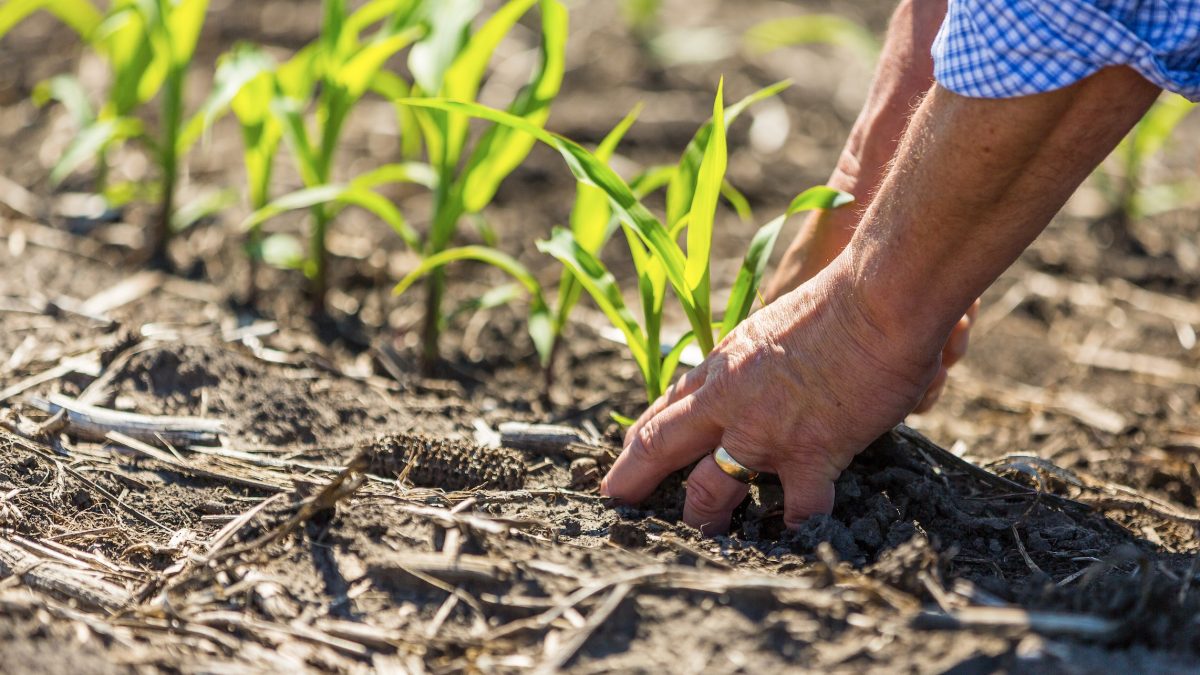
Corn hybrid growth stages are sort of like kids—infants have different needs than toddlers and preschoolers require a different approach than adolescents.
In the same way a teenager outgrows shoes every-other-month, there is huge development going on at all points of the plant’s life cycle.
Let’s look at each the early corn growth stages first—what’s happening within the plant and what you can be on the lookout for to give your crop the very best chance possible.
Germination & Emergence
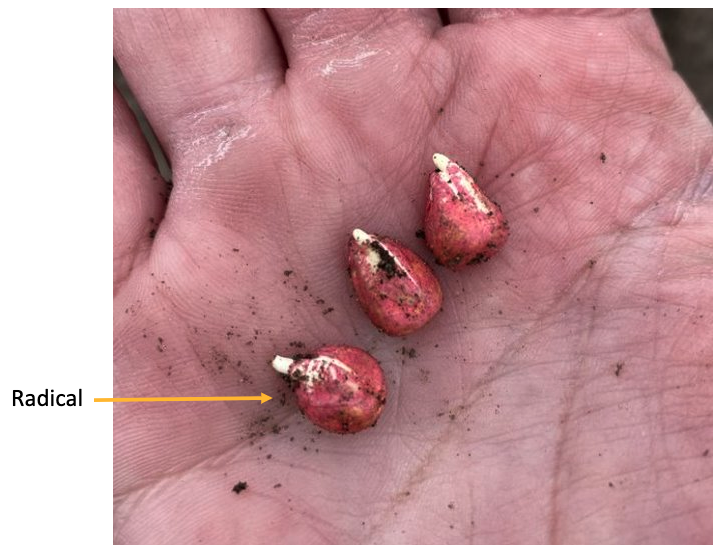
What’s happening in the plant during germination?
- The seed absorbs 30% of its weight in water for the embryo to get going.
- Starch in the kernel is converted to sugar, the seeds main food source as it starts its journey.
- Radical (root) starts to grow downward.
- 4 days after radical grows downward, coleoptile starts to elongate toward the surface. This is what will become the plant.
- Coleoptile usually breaks the surface of soil 6-10 days after planting. Or up to a month if you’re a super early planter. This is officially emergence.
Look out for:
- Temperature: don’t plant below 50 degrees. Starch cannot convert to sugar for energy in temps lower than 50 degrees.
- Saturated soils: the plant needs oxygen. Planting in saturated conditions will essentially drown the seed.
- Depth: not too shallow, not to deep. Our research suggests 1.5”-2.25” is the sweet spot.
VE (Vegetative Emergence)
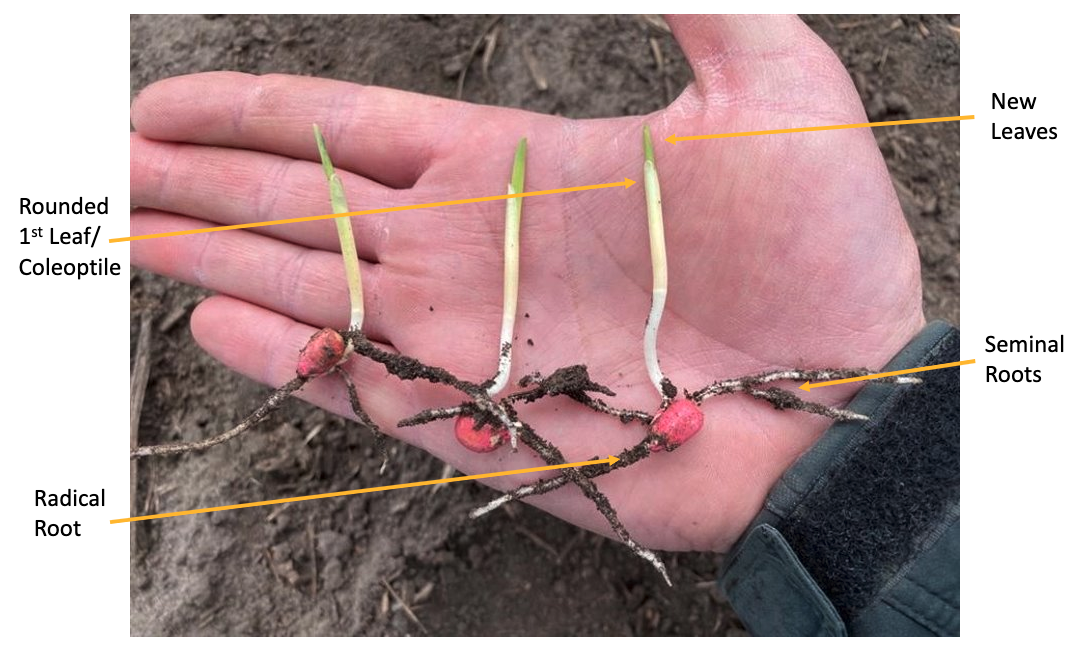
GDU’s to Vegetative Emergence: 150
Days after Planting:7-30 days
Height: 1 inch
What’s happening in the plant during VE?
- Once coleoptile has emerged, the first five leaves of the future corn plant are developing within the plant.
- Coleoptile will split and leaves will start pushing up through it.
- All node growth is happening beneath the surface. It’s putting down a root structure that will eventually support the plant’s height.
- The ground is acting like a blanket, protecting the plant from the outside world: deer, hail or even frost.
Lookout for:
- Wireworms, white grubs and other underground pests.
- Seed treatment is your friend during this stage to stave off all these sneaky, hungry pests lurking in your soils.
- Seed treatment will also keep a whole list of diseases from infecting the plant.
V1 (First Vegetative Leaf)
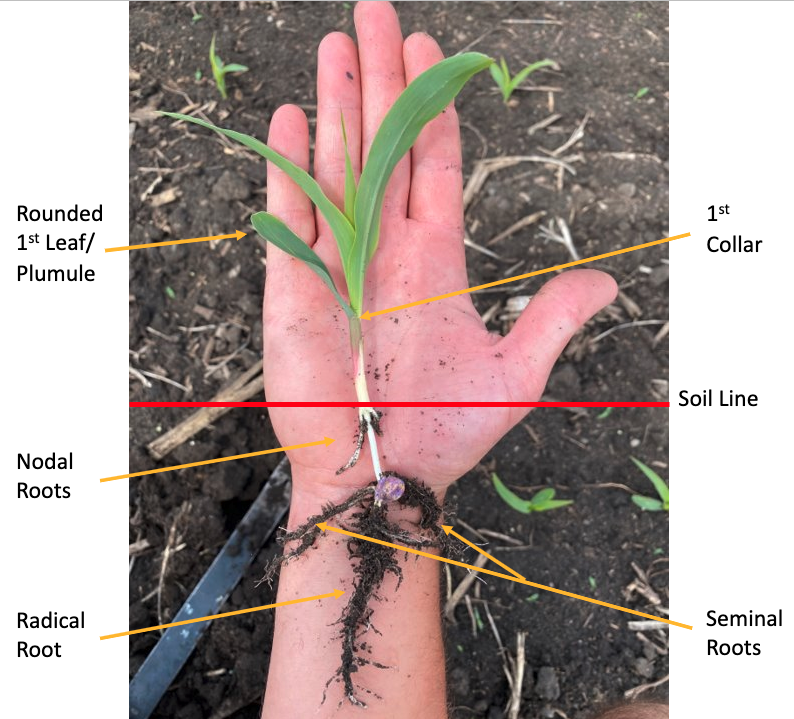
GDU’s to V1: 210 (roughly additional 60 gdu’s per leaf)
Days after emergence: 8 days
Height: about 2 inches
60 additional GDU’s after emergence
What’s happening in the plant during V1?
- An exciting time. The first real leaf appears in V1.
- You’ll start to see swelling where the crown roots will come out. These will eventually hold the plant up.
- ¾” below the surface is the growing point. There’s a lot of action happening there.
- Nodal roots are growing and most energy is still being spent underground.
Lookout for:
- Cutworms eating off small plants. Although typically not a huge problem, economic threshold is a possibility in high populations.
- Make sure you are counting fully emerged collars on the corn and not leaves.
- A V1 leaf has a rounded tip. All the others are pointed. There’s a great debate between seed sellers and chemistry folks about this but this is the guideline we go by.
V2 (Second Vegetative Leaf)
GDU’s to V2: 270 (roughly additional 60 GDU’s per leaf)
Days after emergence: 14 days
Height: about 3 inches
What’s happening in the plant at V2?
- First set of nodal roots are really starting to elongate.
- The growing point is still under ground.
Lookout for:
- Irregularities: scout for uniformity, vigor and stand counts. Check out this article for more on that topic. (link to: https://www.petersonfarmsseed.com/stand-count-central-by-hand-or-by-drone/)
- Weeds: when corn pops up, so do weeds. Now is the time to get a handle on what else is in your fields.
V3 (Third Vegetative Leaf)
GDU’s to V3: 330
Days after emergence: 19 days
Height: about 5 inches
What’s happening in the plant at V3?
- At V3 the plant depends less on seed nutrients.
- Nodal and Seminal roots supply more and more moisture and nutrients.
Lookout for:
- Fertilizer deficiencies: the plant is looking for nutrients outside of itself. Small developing root systems need the fertility close by. For this reason, I am a big fan of starter fertilizers.
- You may be able to tell at this point if you didn’t have enough fertilizer up front.
V4 (Fourth Vegetative Leaf)
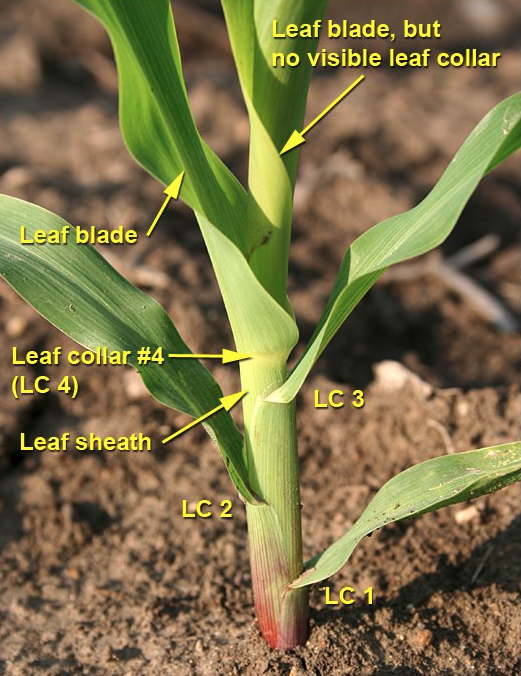
GDU’s to V4: 390
Days after emergence: 24 days
Height: about 8 inches
What’s happening in the plant at V4?
- Roots continue to expand.
- 3 sets of nodal roots should be visible.
- Stalk will start to elongate, putting on height.
- Growing point is still under the ground.
Lookout for:
- Fertilizer deficiencies, especially in corn–on–corn fields. (Yellow anemic looking fields). Like V3 a small root system still may not reach most of the broadcast fertilizer applied.
- You will really start to notice in V4 if you’re short on nitrogen.
- If short, amendments can be made but you will need to do it soon before yield loss occurs.
V5 (Fifth Vegetative Leaf)
GDU’s to V5: 450
Days after emergence: 28 days
Height: about 12 inches
What’s happening in the plant at V5?
- Starch has been converted to sugar and the seed no longer contributes to the plant’s growth. Your baby can now feed itself!
- The growing point moves above ground and the plant is susceptible to the elements: hail, frost (not that we’d get that), etc.
- This is when corn will go from looking a little awkward to looking awesome! That’s because the root system is now big enough to utilize the fertilizer throughout the profile.
- If you split the stalk, you can find the ear!
- The first leaf that appeared during emergence shrivels up and dies off.
Lookout for:
- Greensnap: If temps are warm and the plant is growing nicely, you can start to have greensnap issues. Rapidly elongating cells tend to be more brittle and with high wind can be a problem starting at V5.
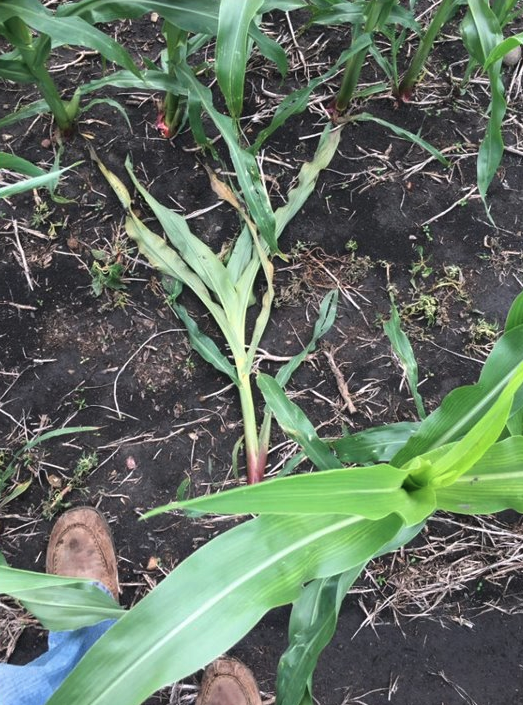
Stay tuned for part 2 of this series where we look at stages V6 to VT.
Drop me a line at Rick@PetersonFarmsSeed.com with agronomy questions or with suggestions you’d like to see us write about.
Head over to the right side of this blog to sign up for my weekly in-season GDU tracking report “Swenson’s Weekly Snapshot” to track GDU accumulations in your area and across the Peterson Farms Seed footprint.

